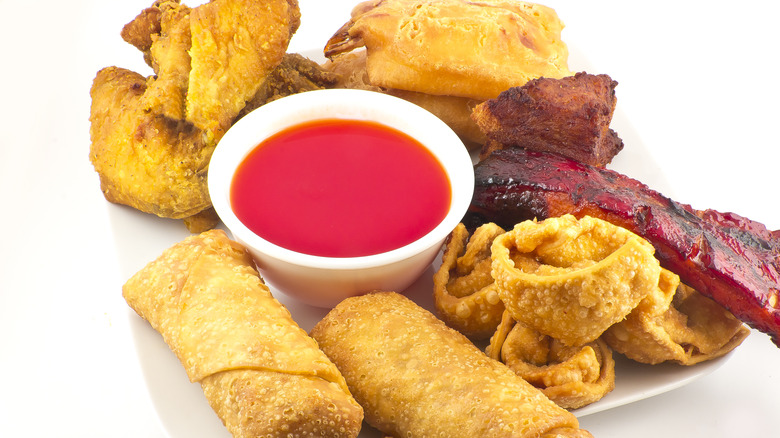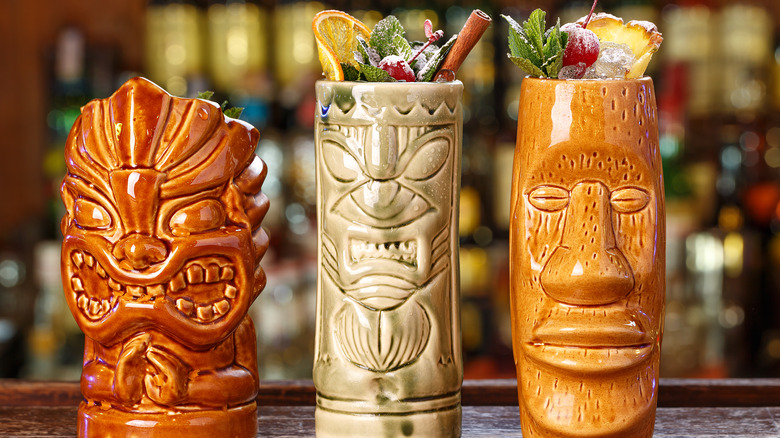The Debated Origins Of The Pu-Pu Platter
Kids giggle when they hear its name. Adults conjure images of sipping fruity rum cocktails in a tropical atmosphere. But who the heck decided to call it a pu-pu platter? We're talking about the flaming hors d'oeuvres mash-up ubiquitous to Chinese-American restaurants and tiki bars. According to Taste Atlas, a traditional pu-pu platter consists of an assortment of small bites — usually fried — including some combination of spare ribs, chicken wings, egg rolls, fried wontons, crab rangoon, skewered beef, fried shrimp, and beef teriyaki all arranged around a fueled flame for easy-access reheating.
Turns out pu-pu platter is not some made-up name concocted by a couple of rum-soaked buddies giggling over a tiki bar menu. The word pu-pu actually derives from pū-pū, the native Hawaiian word for shell or mollusk that's been co-opted to refer to small bites or appetizers (via Hawaiian Tourism Authority). With the mystery of its name solved, let's try to figure out its history. In the mid-20th century, you would have been hard-pressed to find a Chinese-American restaurant that didn't list the pu-pu platter front and center on its menu. But no one was claiming the decadently fried sharing combo had anything to do with authentic Chinese cuisine. So where did it originate?
A tale of two places
Taste Atlas reports most sources trace the origins of the pu-pu platter to one of two sources — Don the Beachcomber or Trader Vic's. The California watering holes (Don the Beachcomber's in Los Angeles and Trader Vic's in the San Francisco Bay Area) were at the forefront of tiki culture in the 1930s. Both establishments were founded by owners who had traveled extensively throughout Polynesia and the South Pacific. And both founders were enamored with the island-esque ambiance of the honky tonk variety.
According to Men's Journal, Ernest Raymond Beaumont Gantt (who legally changed his name to Donn Beach, opened Don the Beachcomber in a tiny space just off Hollywood Boulevard, per Liquor.com. At about the same time, Victor Bergeron debuted Hinky Dink's (later known as Trader Vic's) in Oakland (via Famous Hotels). Now it gets murky. We assume Gantt and Bergeron were aware of one another's tiki-forward enterprises.
We know both enthusiastically created rum-based cocktails to serve alongside their interpretations of Chinese- and Polynesian-influenced food, including the pu-pu platter (via Martin Turnbull). This is where the story splits. According to Sampan, a review of three vintage Don the Beachcomber menus didn't find any mention of a pu-pu platter while a Trader Vic's menu from the 1950s mentions hot pupus and Polynesian hors d'oeuvres. On the other hand, Jennifer Trainer Thompson, author of "The Great Tiki Drink Book," credits Gantt with introducing the pu-pu platter in 1934 (via Orlando Sentinel).

